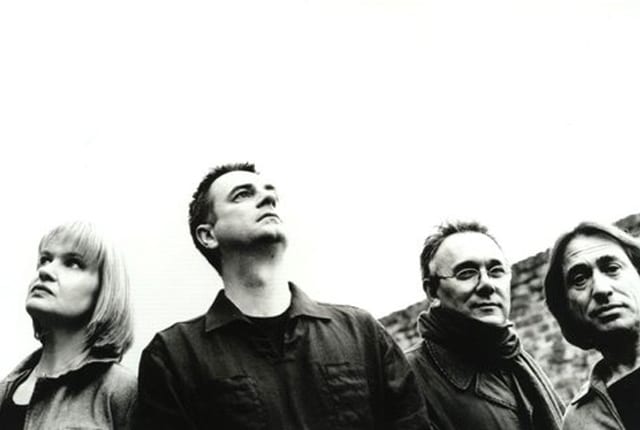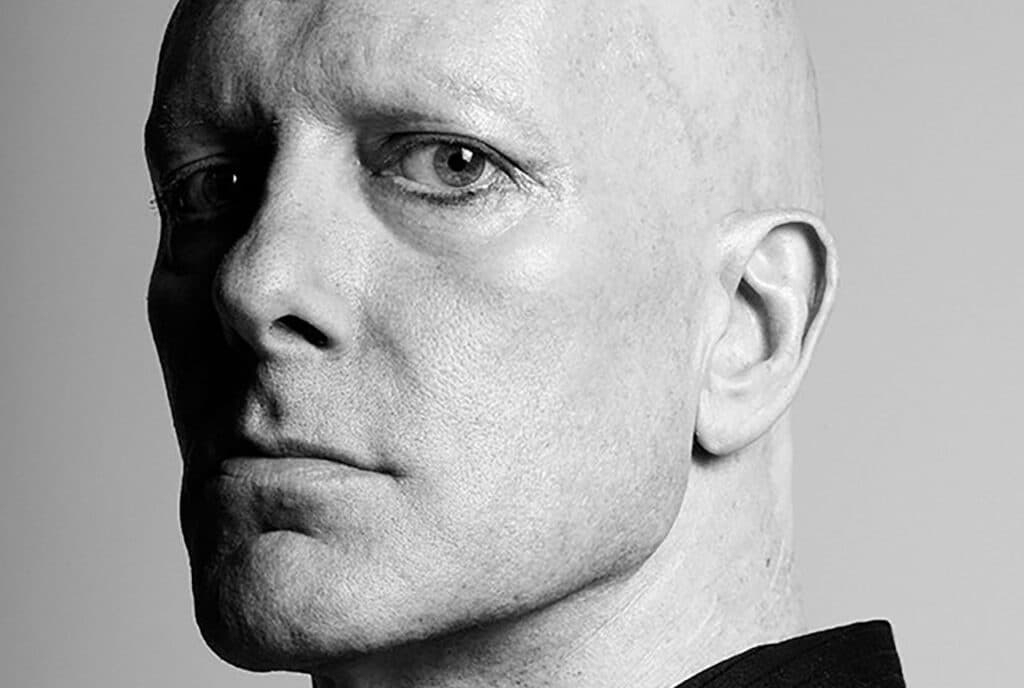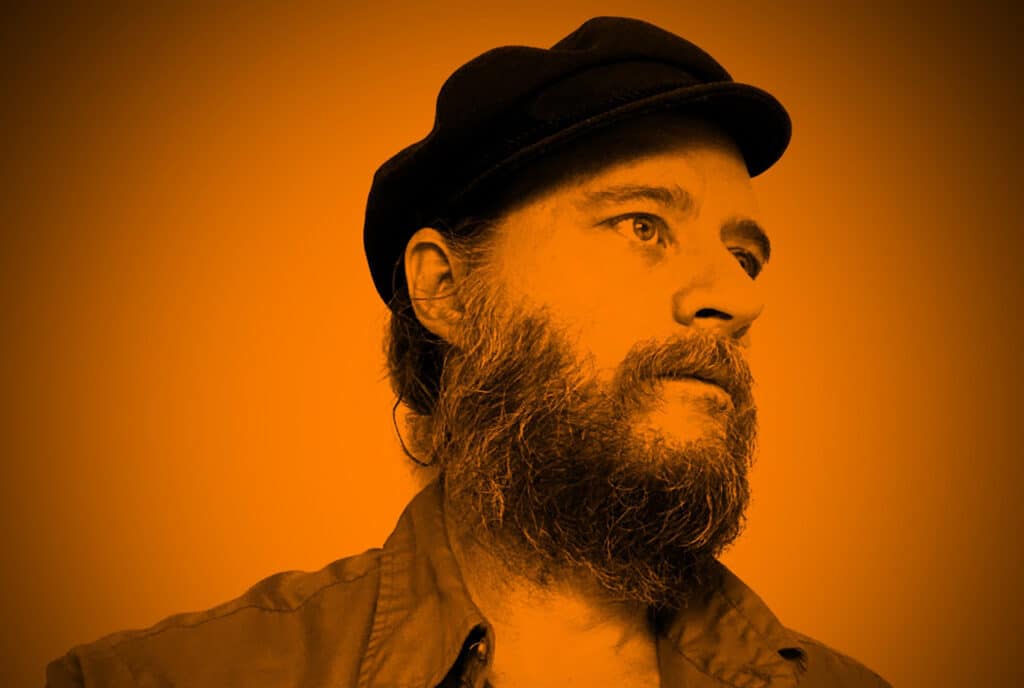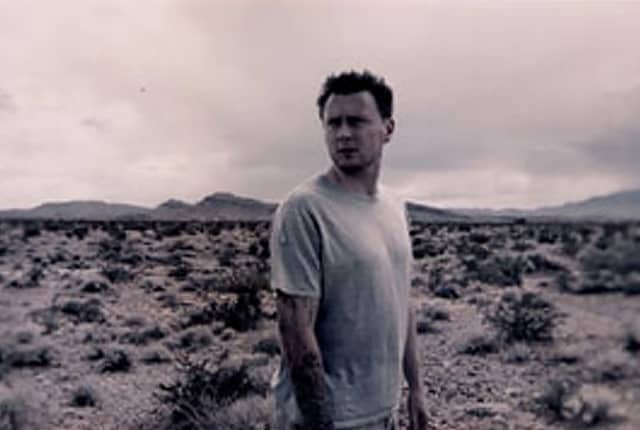An interview with Anne Dudley and Paul Morley of The Art Of Noise, conducted when they were releasing “The Seduction of Claude Debussy” in 1999.
It’s been a long time since The Art Of Noise put out an album. Why release a new one now?
Anne: “I think the power of an idea. There’s nothing so powerful as an idea whose time has come. The time came for us to get back together and make a new record for the end of the century, for the end of the millennium. And to bring all sorts of ideas together into one piece of work.”
Paul: “And we wanted to party like it was 1999. It’s a great space age year, 1999. It was irresistible. Our first album came out in 1984, which George Orwell made into a great space age year. 1999 is a great space age year, a year for the future. We’ll put out another album in 2001, another great space age year.”
How did using Claude Debussy as the subject come about?
Anne: “There initially was 3 ideas, I believe. And we almost put out a triple album based on three different ideas. One was the lost railways of Scotland, the works of JG Ballard, but the one that stood the test of time was Claude Debussy. And the main reasons for using Clause Debussy is that he’s acknowledged to be the father of 20th century music; enormously influential composer, enormously influential as a critic.”
Paul : “A lot of pop groups go back 30 or 40 years for ideas, so that’s a diminishing source. And it seemed to us going back 100 years to actually sort of summarize the 20th century’s music, so to speak, seemed to be an idea that actually opened up the future a lot more. So it wasn’t a nostalgic act at all, it was about moving into the future. There’s endless possibilities to taking music into the future by using music that actually was 100 years old.”
What’s it like being in a band with such a non-traditional format?
Anne: “It’s the combination. I think it’s because everyone in this group does different things that the chemistry is quite extraordinary. We’re not a normal group of four musicians. I was part of the sort of avant guard tradition of John Cage and music concrete and pushing back the boundaries of avant garde classic pop rhythms. I think everyone brings something completely different to it.”
Paul: “It’s what I always imagined a non-group would be. Made up of not necessarily bass, drums and guitar. It’s all about the ears and imagination and the process. It’s a thinking process, almost. Ideas come from various members, and then it’s survival of the fittest ideas. A lot of stuff is improvised, and then 6 months later you notice that an idea that happened there is still attached to the music. I always thought that pop groups were going to be made up in the 21st century. It wouldn’t be four musicians, as such. Especially in the online world, with the worlds that are opening up. There’s different ways of presenting a pop group to the world. It doesn’t have to be the same old poses.”
How did Lol Creme come to join The Art Of Noise?
Paul: “We put an advert in a magazine asking for a particular kind of video artist/musician. Lol Creme was the only answer we got, but he was perfect. It’s kind of interesting because the average age of the group is a little higher, so we were going to lower it by hiring a 20 year old but we decided to go the other way and got Lol, who is in fact not 20, to raise the average age of the group just to confuse people. He was working with Trevor at the time when these ideas were coming around.”
Anne : “We thought it would be better he joined the band rather than just work with Trevor, because then group might have been called Creme Horn. Which is pretty bad. We thought Art Of Noise would be better.”
Paul : “Also, The Art Of Noise has never actually been a four piece. We’ve come about this theory that the best number in a pop group is four. So, at last we’re a four pieces. We always had 4 masks in the early days, but there was often 3 or 5 or 2 or 1 in the band. But now we have 4 masks and have 4 members.”
Who else contributed to the album?
Anne : “It’s an interesting mix. It’s a very sort of late 20th century mix, I suppose. Well, there’s Sally Bradshaw, who’s a classical singer . She sang the original Debussy songs and we recorded those. And there’s John Hurt, a British actor of great distinction whose voice we thought was the perfect tone color. And there’s Rakim, who’s sort of the modern poet. As soon as Rakim came up with the immortal rhyme “Aerodynamic in the Evening Air” we knew that we had it!”
Paul : “I think the great thing about the Art Of Noise is that we don’t have a lead singer. Anything can become a lead singer. It’s kind of great being a group without a lead singer, because the possibilities are sky high. Odd things become the lead singer, noises become the lead singer. It actually makes the thing much more flexible. The Art Of Noise – part 2 To try things out and make odd combinations of people. I mean, you can have Sally Bradshaw and John Hurt and Rakime all on the same track, bustling around, putting odd lines in. The kind of contradictions and combinations that it creates are nice.”
Musical technology has advanced quite a bit since The Art Of Noise started. What effect has it had on the way you work?
Anne : “It’s interesting because now that samplers are very cheap and high- powered, we’re not interested in them any more. What created part of the original sound of The Art of Noise were the limitations of the technology. The early sampler, The Fairlight, had like a 2 second sampling window and you put in a nice bright sound it and it came back all dull and horrible. That forced you to do interesting and creative things with it. It had a certain sound, and if you listen to those early Art Of Noise albums they have a certain sound and that is determined by the limitations of the technology. Once the technology ceases to have limits, it’s almost like having too much freedom. It’s difficult to work, really. The only sampling now, if you call it sampling, is stuff that we’re generating ourselves. Paul: “What we wanted to do was make a record where the imagination dominated over the technology. In essence, it’s a very electronically produced record, but we didn’t want you to be able to see the technology. Nowadays it seems a little bit coy to show off the technology.”
What instruments or pieces of equipment are most important to you?
Anne: “The brain and the piano”
Paul : “The brain and piano, that’s it. And then lots of other stuff that help us travel through time.” In terms of current electronic gear, what do you find to be the most helpful in making your musical ideas a reality?
Paul : “I guess Protools.”
Anne : “Yes, Trevor has the latest, most expensive version of it. People get the impression that we’re a really technologically driven band, but we’re more interested in improvisations and spontaneity. Just as long as the equipment can enable us to preserve the spontaneity, then we’d use it.”
Paul : “Our favorite kind of equipment is the kind that doesn’t talk back”
Protools offers so many possibilities; do you find yourselves having to impose limits on yourselves?
Anne : “The difficulty is ‘when is it finished?'”
Paul : “When to abandon it.”
Anne : “I don’t think it gets any easier the more you do it. You tend to twiddle with it until the record company says ‘when are you going to deliver this record?'”
You had a remix album out a few years ago; what’s your opinion of the mixes?
Anne : “We often get his question, and I feel a little bit uncomfortable with those. The Art Of Noise had no creative control over those whatsoever and it’s a strange process. Sending it out to someone else and receiving something that you’re not allowed to change or edit. You might not like it, and it has your name on it.”
Paul : “The remix culture became very much controlled by the corporate world, it’s a marketing tool mostly, to create mixes for different genres. So it’s very soul-less in a way. The Art Of Noise in the early days used to do lots of variations of pieces of music, but they were all done by Art Of Noise. Alec James from Blur once said that if you had this beautiful dog and someone takes it away and 2 days later it comes back as a completely different dog … there is some of that. What’s the point of that?”
Anne : “A lot of what The Art of Noise does is deliberately mixing genres. And what really annoyed me about the remixes is that they’re very straight down the line.”
Paul : “Yes, they take away all the wit, the musical imagination, and turn it into a science. Someone flipped a switch. I’m not denying that in the world there’s been some tremendous musical happenings, like DJ Shadow or whatever, that kind of thing. But when it goes into the weird thing where you get a remix done by a certain person because they need a brand name, that’s when it becomes really discouraging.. People buy an Art Of Noise album, for instance, that The Art Of Noise had very, very little to do with, and it doesn’t sound as imaginative and as rich and as witty and as playful as we like The Art Of Noise to be. And yet The Art of Noise’s name is on there. For the new record, we had a really great remix done by Roni Size and we adore what he’s done because he really got into the spirit of the record. But often, you just feel you got a piece of music that’s being done by the yard and has been cut off and then a couple of your bits have been thrown over the top like a dodgy salad.”
Anne: “And you find in your contract that you have no control over that.”
Were you given any input at all? Did you get to approve the mixes?
Anne : “No. We were sent the CD and told ‘here’s the CD!'”
The Roni Size mixes are being distributed over the internet. How do you feel about that?
Paul : ” It’s just another version of the radio. Record companies get very upset about it, saying it will stop people from buying records. But it’s not like radio stops people from buying records. And an artist can distribute the music direct, without there being the blockage in the middle. It’s going to be an interesting dilemma for certain corporations. They’ve worked so hard to make themselves important in the way music goes out into the world, but it’s completely irrelevant when people can get their music in a different way. I’m still a big believer in holding something, like making something beautiful that people have in their homes. So you create an atmosphere with the artwork and packaging. There are a lot of possibilities, but it’s still in the early days. No one knows quite what things are in that world. You know what a record is, you know what a film is, you know what a book is. That world, no one quite knows what those things are.
“I think the internet and the web is just like a big consciousness of the planet, a big brain of the planet. Like Ask Jeeves, the search engine, it’s like God! Jeeves is God. To me, what’s interesting is the way corporations try to control it, so therefore essentially the soul of the planet is being controlled by corporations. And it seems important for the artist to really get in there and make it not a sales thing, but something that’s about imagination.”
Is The Art Of Noise directly involved with their web site?
Paul : “Yes”
Are you interested in exploring the creative possibilities of the web more, pushing the limits of it?
Paul : “Yeah, we do want to, in the sense that no one knows quite what those things are yet. I think the possibilities are endless, but it’s so difficult at the moment to make inroads because it’s a selling thing, as opposed to being an art thing. Those two things are very tensely contradictory at the moment, in the way that art vs. commerce always is. It will be interesting to see which way it goes. I like the wild west-ness of it, obviously the corporate side is trying to control that.”
Do you ever look online to see what people are saying about The Art Of Noise?
Paul : “Oh yeah. That’s the wonderful thing about it, that world. The corporations have all their marketing tools, but it’s so much better to go in and find out what’s going on and what people are thinking.”
You all do so many different things; do you find you other projects having an impact of The Art Of Noise? Or do you try to keep things separate?
Anne : “We’ve all done some interesting things, which means that the 4 of us coming together have quite a lot of interesting things to put onto the table.”
What’s in the future? Are you serious about putting out a new album in 2001?
Paul : “Yeah, it would be nice. I think at the moment we’re having so much fun, this format of The Art Of Noise may make something else.”
Anne : “Yeah.”
Could that mean The Art Of Noise could get close to being a ‘normal’ band, releasing an album every year or two?
Anne : “No! We could never do that. We just couldn’t. It might be another ten years. Though we’d be old then.”
Paul : “Well, the average age would shoot up.”










